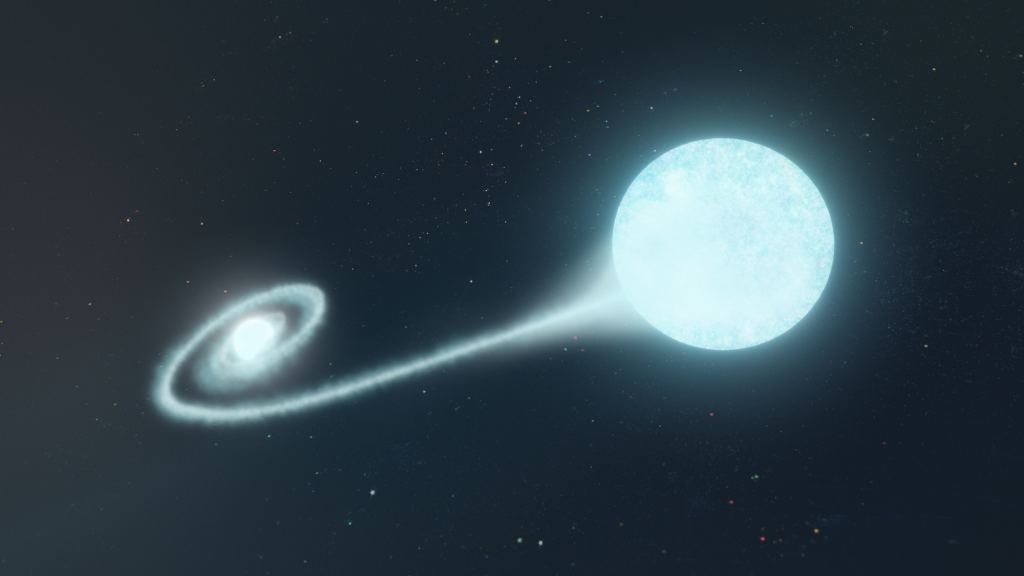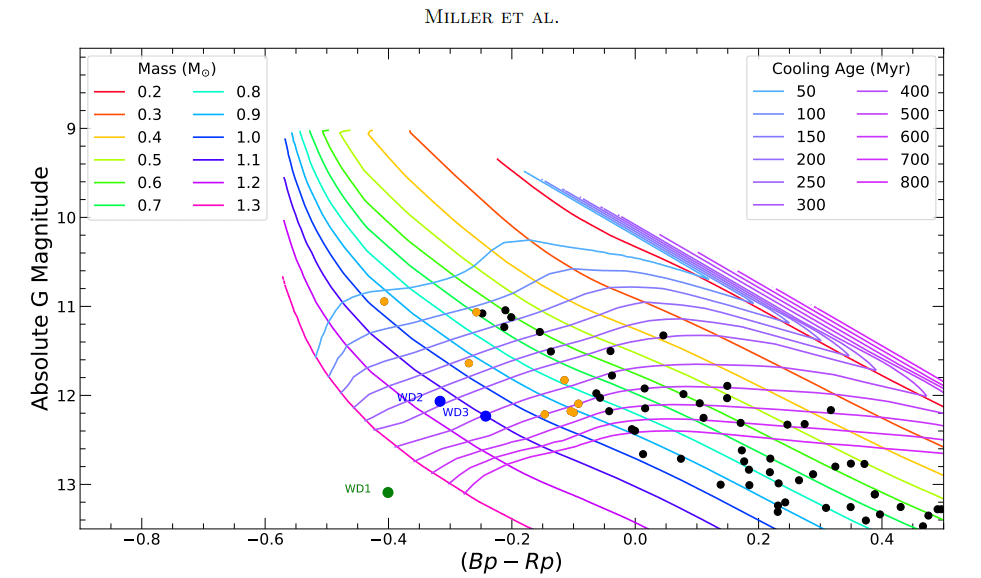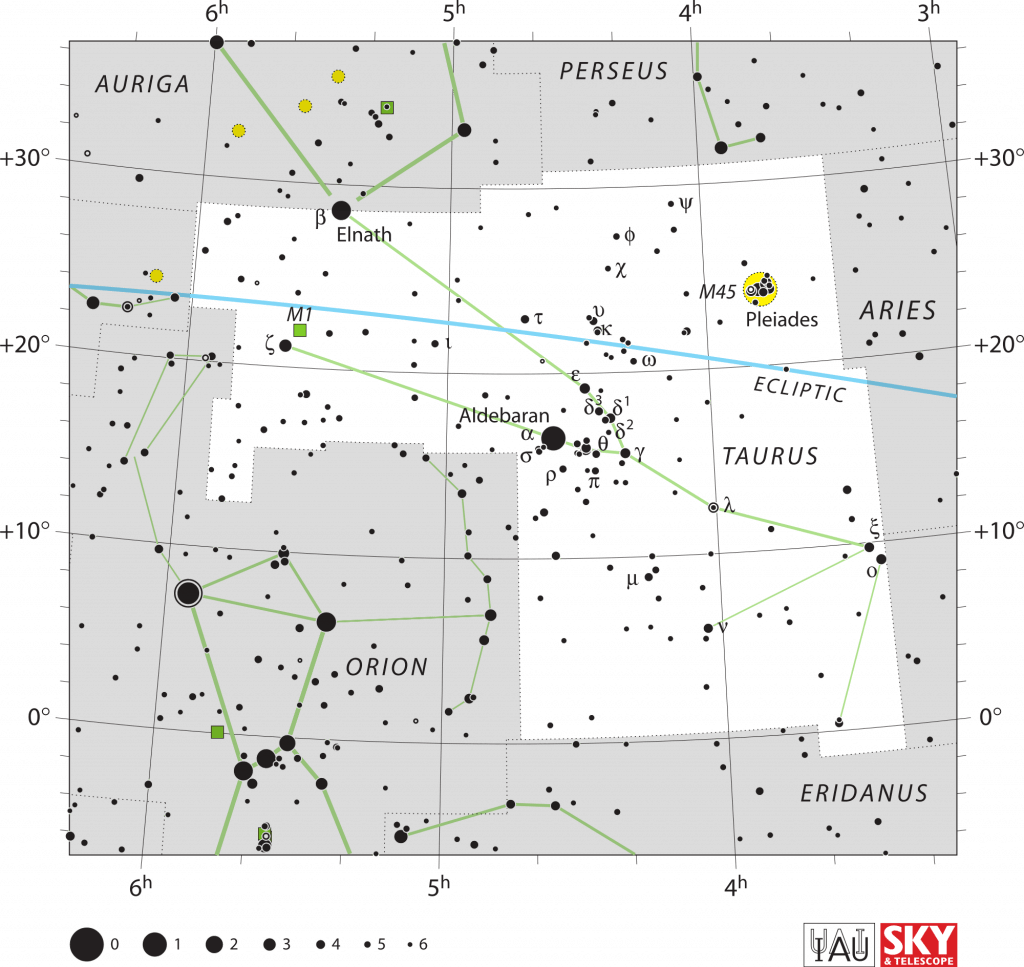The Hyades star cluster is only about 153 light-years away. At that short distance away, it’s visible with the unaided eye in the constellation Taurus. Its proximity gives professional astronomers an easier time observing it than many other objects of interest. Hyades contains hundreds of stars with similar ages—about 625 million years—similar metallicities and similar motions through space.
But something’s missing from the Hyades cluster: white dwarfs. There’s an apparent lack of them, with only eight of them in the cluster’s core. Where did they go?
The Hyades Cluster is pretty unremarkable. Studying it creates a benchmark in astronomers’ understanding of star clusters. But it does have at least one wrinkle, and that’s its lack of white dwarfs. It’s a stumbling block in understanding Hyades. However, a new study found one that was ejected from the cluster. And it’s an ultra-massive white dwarf, one that nudges up against the mass limit for this type of stellar remnant. How does it fit in?
The new research is titled “An Extremely Massive White Dwarf Escaped From the Hyades Star Cluster.” It’s been submitted to The Astrophysical Journal for publication, and the lead author is David Miller. Miller is from the Department of Physics and Astronomy at the University of British Columbia.
Open clusters like Hyades are only loosely bound, and over time, they lose stars through interactions with gas clouds, other clusters, and between cluster members. Miller and his co-researchers examined the lack of white dwarfs in Hyades as a means to reconstruct the Hyades cluster. If they can identify stars that have been evicted, especially white dwarfs in this case, they can piece together the cluster’s history.
Fortunately, the ESA’s Gaia spacecraft has been tracking over one billion stars in the Milky Way, giving Miller and his colleagues a massive compilation of data to search through. The team found three ultra-massive white dwarfs with kinematics indicating they could’ve left the Hyades cluster. The mass range for two of them made it unlikely that they did come from Hyades, but not for the third one. That object “appears to be a high-probability escapee” from the cluster, the authors write.
White dwarfs are as massive as the Sun but the size of the Earth. They’re made of electron degenerate matter and left their life of fusion long ago. The only energy they emit is remnant thermal energy.
White dwarfs are the end state of about 97% of the stars in the Milky Way. They’re governed by the Chandrasekhar Limit and can only have about 1.44 solar masses. If they gain more mass than that, typically by siphoning it from a binary companion, they explode as Type 1a supernovae, with the entire mass of the white dwarf dissipated into space.

Hyades’ escaped white dwarf is called an ultra-massive white dwarf. These types of white dwarfs have 1.10 or more solar masses. That’s well below the Chandrasekhar limit but well above the average white dwarf mass of about 0.6 solar masses. They’re important outliers in the astrophysical study of white dwarfs. High-mass white dwarfs typically come from two progenitor stars in a binary pair, where one of the white dwarfs siphons material away from the other, increasing its mass.
But the Hyades ultra-massive white dwarf has a mass of 1.317 solar masses and an age consistent with only a single progenitor. It’s potentially the most massive white dwarf to come from a single progenitor and is also the most massive single progenitor star to be strongly associated with an open cluster.
“Assuming a single-stellar evolution formation channel, we estimate a 97.8% chance that the candidate is a true escapee from the Hyades,” the researchers write.
Why is this otherwise unassuming star significant? Because it typically requires two progenitor stars, with one siphoning mass from the other, to create a white dwarf this massive.
“This provides a critical observational benchmark for white dwarfs created from single progenitor stars, demonstrating that single stars can produce white dwarfs with masses close to the Chandrasekhar limit,” the researchers explain in their paper.

Though the Hyades is unremarkable in most ways, it’s so close that astronomers can detect older, cooler white dwarfs and then trace their origins with greater precision. This allowed the researchers to study the cluster in great detail. Since the Hyades is so unremarkable, the team’s results can extend, to some degree, to open clusters in general.
“The combination of the unremarkable nature of the Hyades cluster and the benefits of its proximity suggest that open star clusters may be producing ultramassive white dwarfs, including white dwarfs which push the Chandrasekhar limit, more commonly than previously thought,” the authors write in their conclusion.
The Hyades isn’t difficult to locate in the sky. Orion’s Belt points right at it. If you want to have a look, it’s best seen from Northern Latitudes during November, December, and January. With the unaided eye, it looks like a “V” shape made up of about 20 stars. Good binoculars boost that number to about 100.

The post The Closest Star Cluster Spat out an Extremely Massive White Dwarf appeared first on Universe Today.
No comments:
Post a Comment